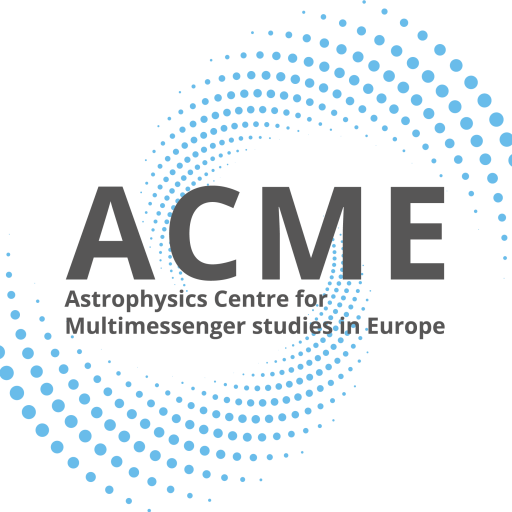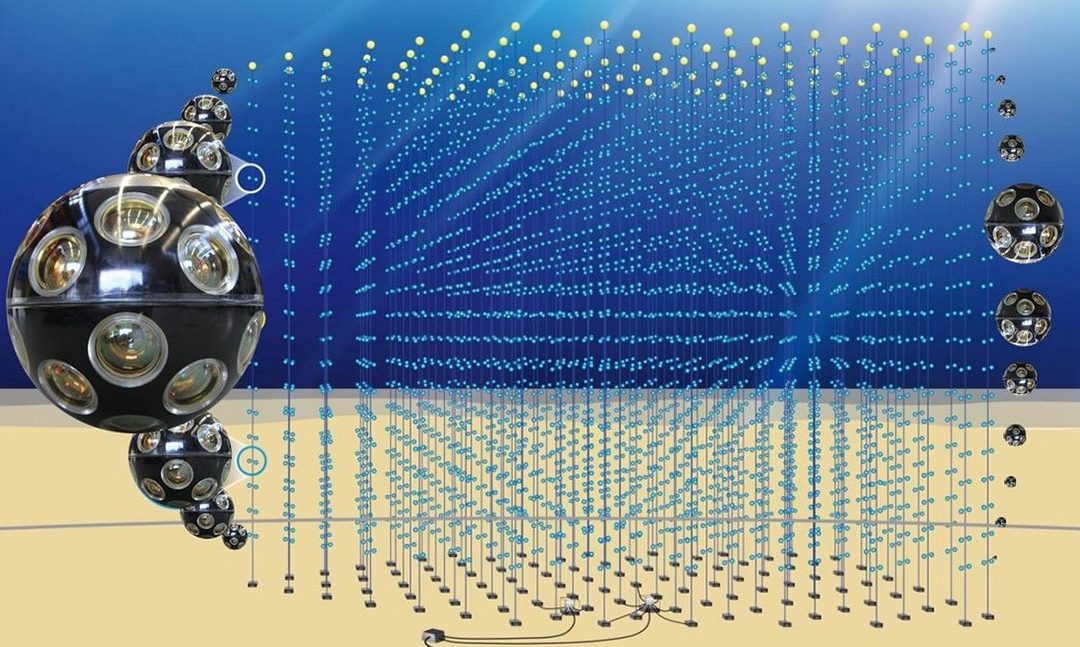The Cubic Kilometre Neutrino Telescope or KM3NeT is a research infrastructure located at the bottom of the Mediterranean Sea, mainly aiming for the detection of neutrinos. It employs the detection of Cherenkov light to identify and reconstruct the direction of neutrinos interacting in the vicinity or inside the detector volume. The detector consists of arrays of thousands of optical sensors that are sensitive to the faint “blue” light emitted by charged particles produced in neutrino collisions. More precisely, the sensors are organised in vertical lines, anchored at the sea bed and each equipped with 18 modules. Once completed, the telescope will have instrumented a total volume of more than one cubic kilometre of clear seawater.
It is distributed into two main sites:
- KM3NeT-ARCA (offshore Portopalo di Capo Passero, Sicily, Italy) is optimized for the detection of astrophysical neutrinos, with energies from TeV to PeV. It will be equipped with 230 lines. Especially, it aims to search for neutrinos from distant astrophysical sources such as supernovae, gamma ray bursts or colliding stars.
- KM3NeT-ORCA (offshore Toulon, France) has a denser layout of 115 lines, optimized for GeV-TeV neutrinos. In addition to astrophysical studies, it may also be employed for the detection of neutrinos produced in the atmosphere and therefore their oscillations and intrinsic properties.
The facility will also house instrumentation for Earth and Sea sciences for long-term and online monitoring of the deep sea environment and the sea bottom at depth of several kilometres.
The oversight, governance, and management of the implementation and operation of KM3NeT is conducted by an international collaboration with more than 68 institutions from 21 countries all over the world being involved. The collaboration consists of about 360 scientists, along with engineers and technicians.
The detector is currently under construction, but lines have already been deployed and taking data. First results have already been obtained, including the detection of an ultra-high-energy neutrino with a configuration of KM3NeT/ARCA with only 21 lines (about 10% of the final number).
Main technical characteristics
- Optimal energy range: GeV — PeV (+ MeV for CCSNe)
- Angular resolution: <0.1° (2°) for track-like (cascade) events above 100 TeV
- Energy resolution: ~50% (5%} for track-like (cascade) events above 100 TeV
Website: https://www.km3net.org

